- Karachay folk music
- Special tunes
- The classes of Karachay folk music
- Class 1: Rotating and plagal motion (№ 1−8)
- Class 2: One or two short lines and their variations with x(1)1 cadences (№ 9-37)
- Class 3: Four short lines with (1) main cadence (№ 38-53)
- Class 4: Four short lines with the first line ending on the key note, with a (pseudo) domed structure and 1(x)y cadences (№ 54−62)
- Class 5: Four short lines with (VII) main cadence (№ 63−70)
- Class 6: Four short lines with (2) and (b3) main cadences (№ 71−105)
- Class 7: Four short lines with (4/5) main cadences (№ 106−115)
- Class 8: Four short lines with (4/5) main cadence and a higher beginning (№ 116−138)
- Class 9: Four short lines with (7/8) main cadences (№ 139−145)
- Class 10: One- or two-lined tripodic tunes (№ 146–186)
- Class 11: Tunes with four tripodic lines (№ 187–199)
- Class 12: Jir tunes (№ 200–278)
- Class 13: Four long lines with arched (domed) structure (№ 279–287)
- Connections between Hungarian and Karachay folk music
Class 3: Four short lines with (1) main cadence (№ 38-53)
The tunes in Class 3 show close resemblance to those in Class 2. They could have been discussed together, for the second line ends on the basic note, closing the tune, as it were, suggesting a two-lined structure. This cadence is however followed by two individual lines, so I took them for four-lined structures. Most tunes – nearly all zikirs or lullabies – are Aeolian-Phrygian.
Grouping within the class was done on the basis of the cadential note of the first line. Among the dominant tunes of Aeolian-Phrygian character there is an even number of cadences around the middle of the tone scale (b3, 4, 5), while among tunes of a mixolydian tint – many using an octave range – the high-ending first line is slightly overrepresented. The Aeolian-Phrygian-character tunes are rather similar to each other. For the sake of comparison, I inserted here a kindred Turkish tune sung in a Karachay village (№ 46), as well as № 43 with a tripodic first line whose melodic contour is similar to that of № 44.
Group 3.1 is characterized by the third degree as the closing note of the first line. Except for № 49 of a mixolydian scale, the tunes here are very similar (Ex.3.1., № 38−42, № 49).
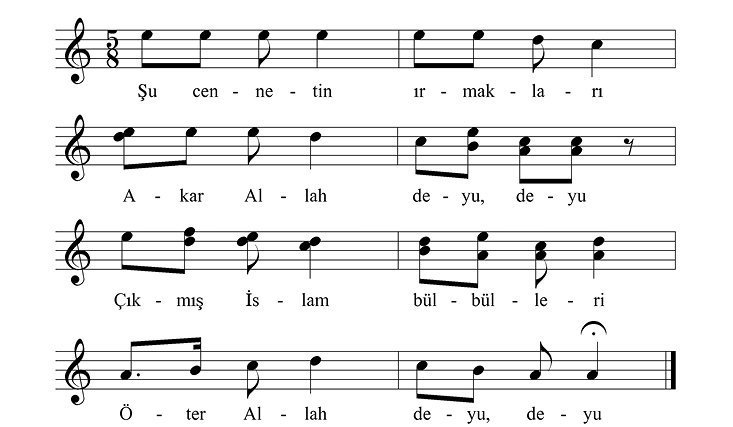
Ex.3.1. Four short lines with (1) main cadence
The first line of tunes in group 3.2 end on the 4th degree. There are three Aeolian-Phrygian tunes progressing in a low register and two mixolydian-character tunes moving fairly high (Ex.3.2., № 43−44, № 50−51). The Aeolian-Phrygian tunes resemble each other very much. The related № 43 with the tripodic first line is also ranged here.
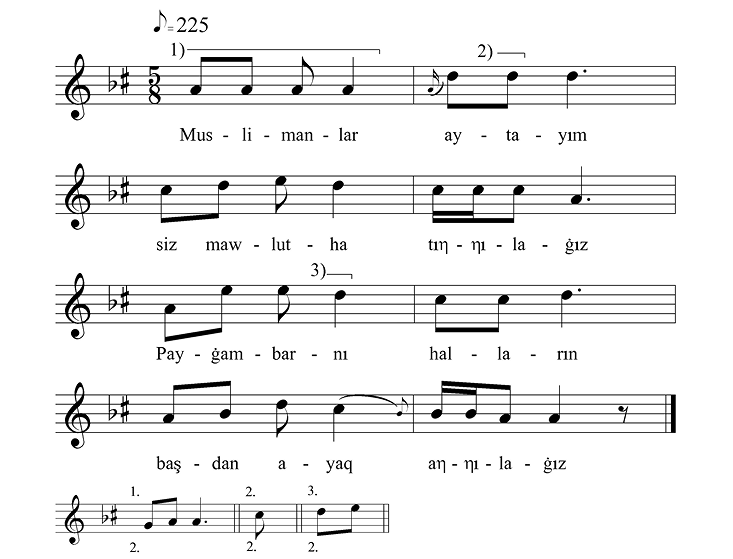
Ex.3.2. Four short lines with (1) main cadence
The Aeolian-Phrygian-character tunes in group 3.3, whose first line ends on the 5th degree, are very popular (Ex.3.3a, № 45−48).5 As for the tunes with a mixolydian-character scale, Ex.3.3b starting with a low valley form is unique, while № 52−536 start high, around the octave.
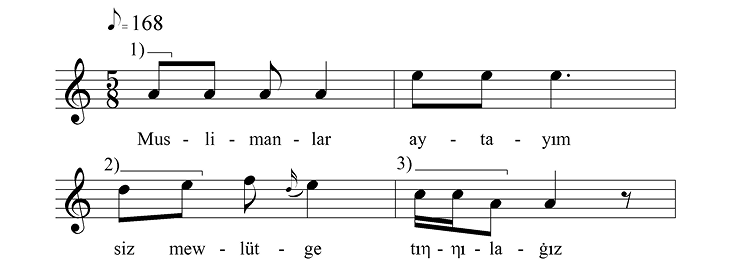
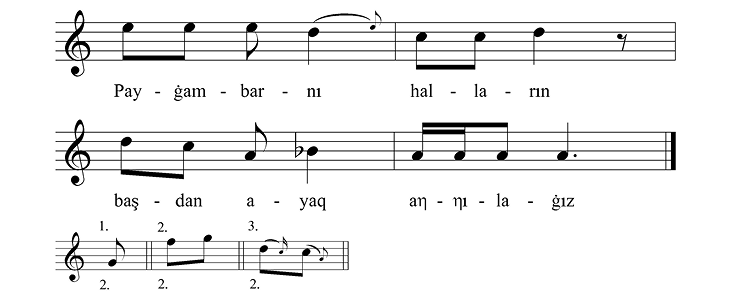
Ex.3.3a. Four short lines with (1) main cadence
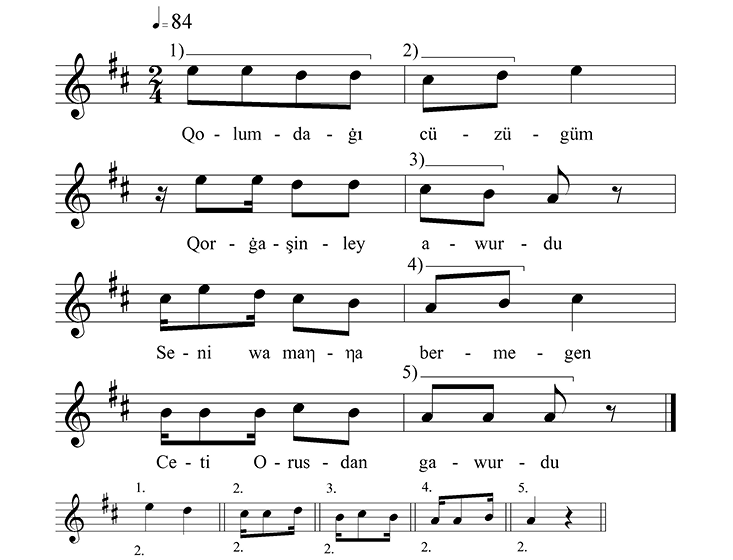
Ex.3.3b. Four short lines with (1) main cadence
